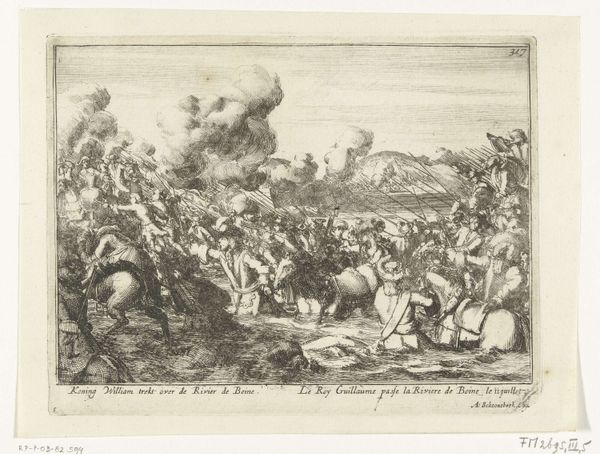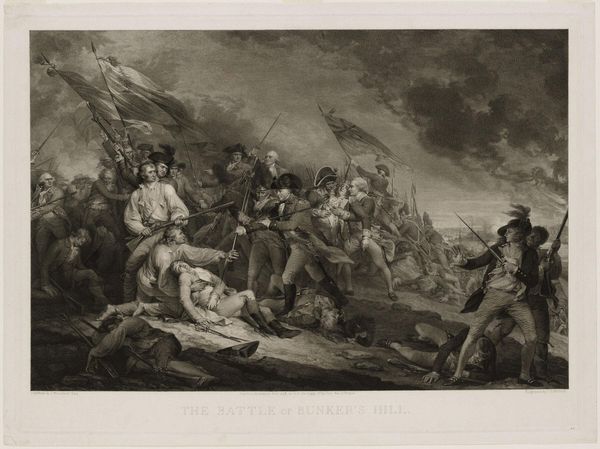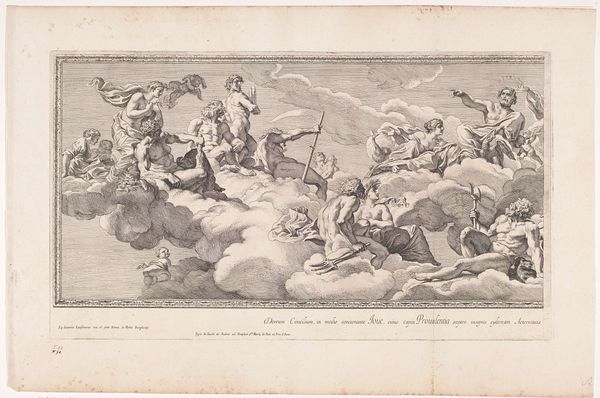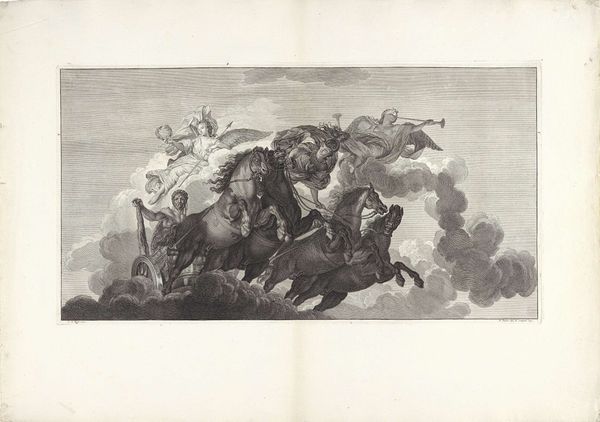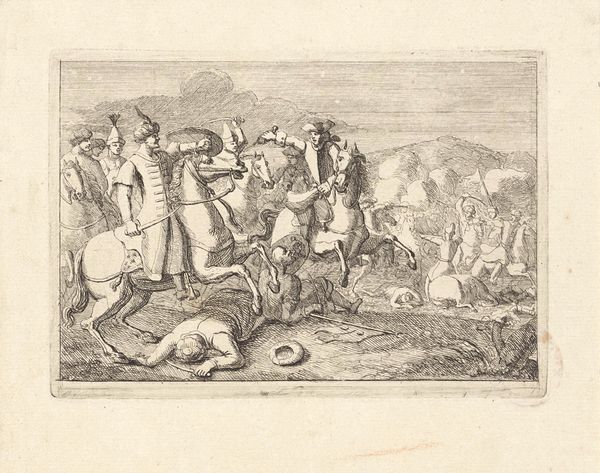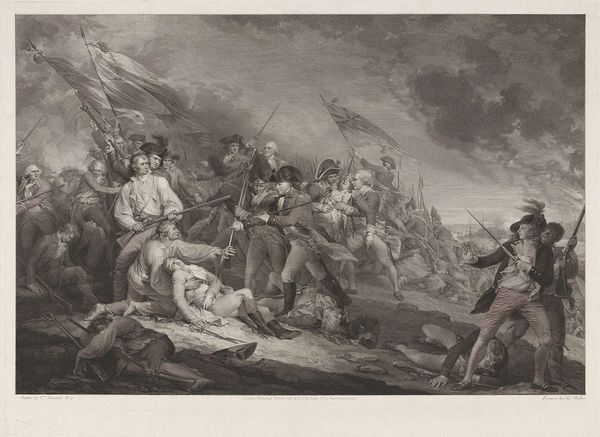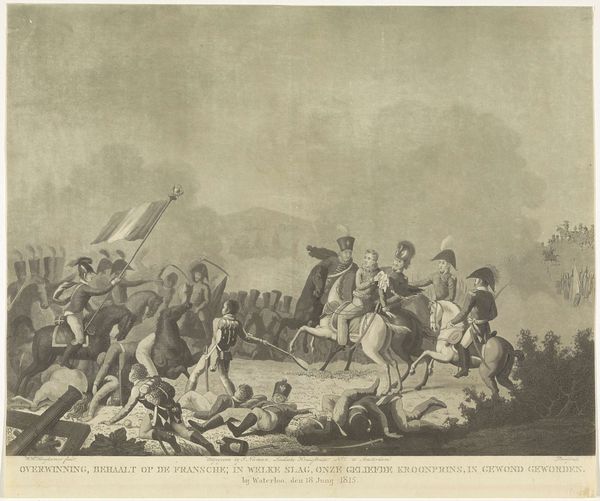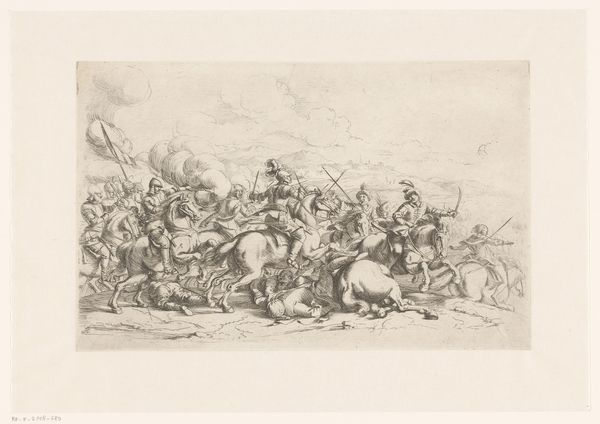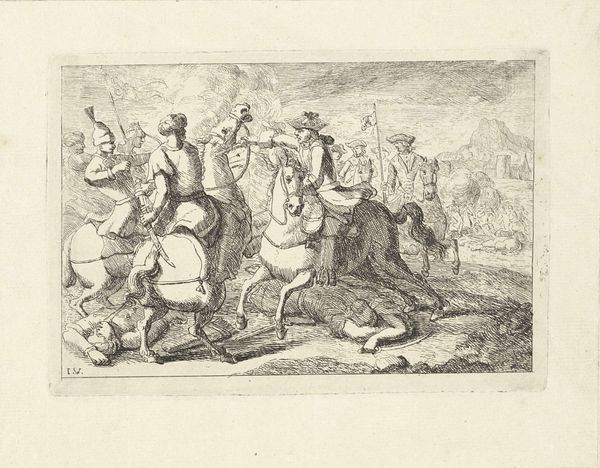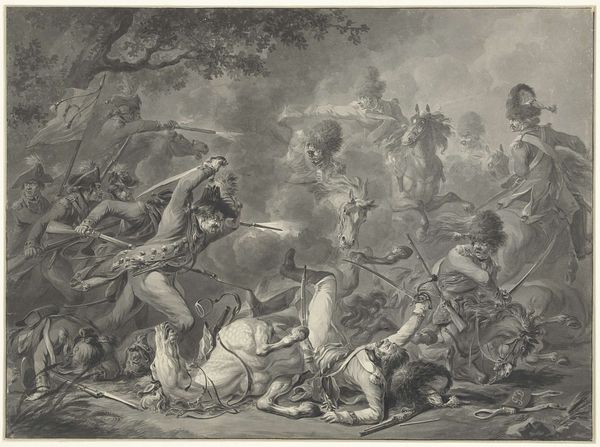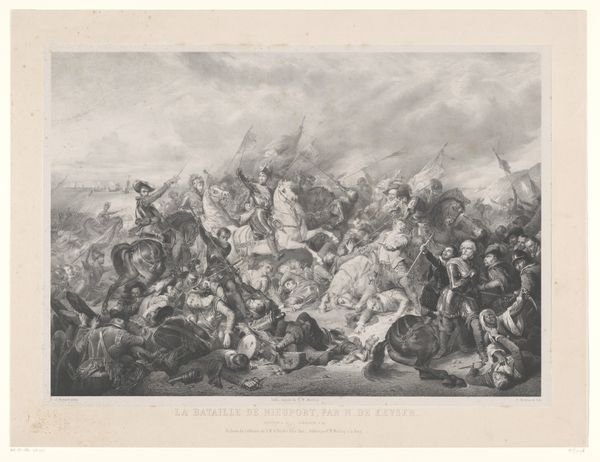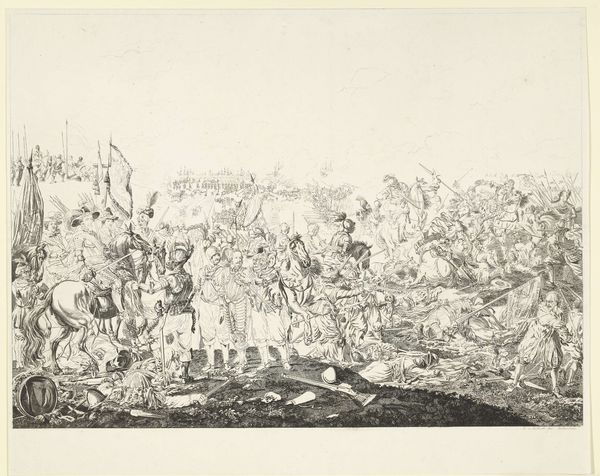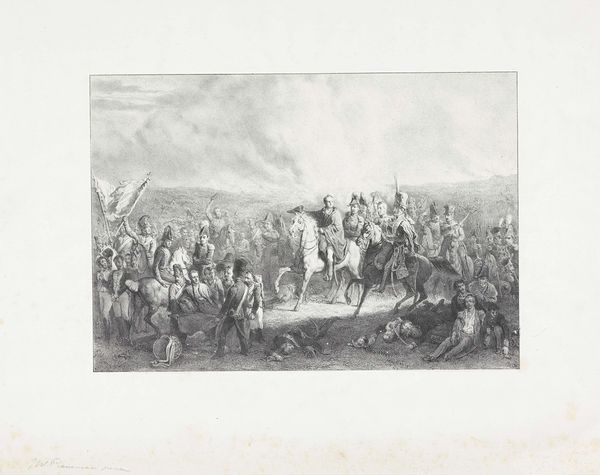
Dimensions: height 485 mm, width 615 mm
Copyright: Rijks Museum: Open Domain
Editor: This is John Hall’s engraving, "Koning Willem III tijdens de slag aan de Boyne, 1690," created in 1779. It's quite a busy image, depicting a historical battle. The detail is amazing considering it’s just an engraving! How do you interpret the symbolism embedded within this scene? Curator: I see a potent image steeped in cultural memory, particularly concerning power, conflict, and legacy. The central figure, William of Orange, is strategically placed, elevated on his white steed, signifying not just leadership but perhaps also a certain divine right. Note how the chaos of battle surrounds him, yet he remains composed, a stoic emblem against the storm. It is tempting to see how the iconography and representation, rather than any commitment to representational truth, dominates this image, where meaning takes precedence over observation. Does it prompt thoughts about the victor's narrative being visually reinforced here? Editor: Definitely. It's hard to miss the implied narrative of triumph, even in the midst of battle. So, are there specific symbols that point to his authority? Curator: Consider the light, Editor, and its directional emphasis on William. Light in art often represents divine favor or enlightenment. Furthermore, the posture of the soldiers, the positioning of their weapons—all these elements converge to amplify William’s central, powerful role. Think of how the engraver uses well-known symbols to manipulate perception. But doesn't the evident drama feel somewhat staged, less like raw historical accuracy and more like crafted propaganda? Editor: I agree. There's a certain grandeur that feels deliberately constructed, almost like a stage play. Seeing it that way, how does that influence its impact on viewers over time? Curator: The image continues to shape and solidify perceptions, reinforcing a specific interpretation of historical events and individuals. It highlights the lasting influence images have on collective consciousness, even centuries later. Do you think, viewing it now, we can still see how the original intention informs our understanding, despite the distance of time? Editor: That's a powerful thought. Recognizing the constructed nature of these historical images makes you question what other narratives might be missing. Curator: Indeed. It urges us to critically examine the visual languages employed in shaping history, understanding the emotional and cultural weight such imagery carries through generations.
Comments
No comments
Be the first to comment and join the conversation on the ultimate creative platform.
